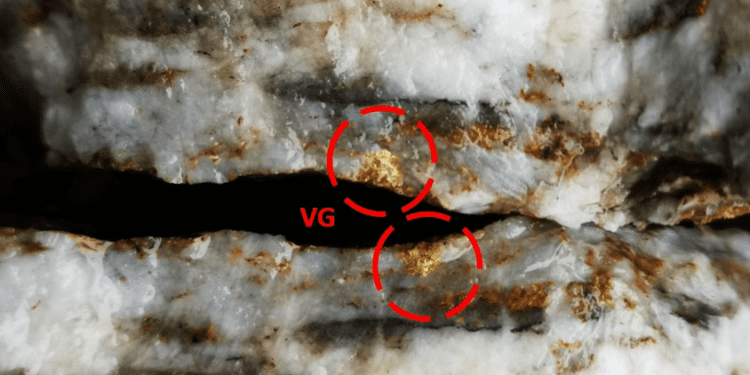Assays 194g/t Gold In Newfoundland
Exploits Discovery Corp (CSE:NFLD) has received bonanza grade assay results from its late 2020 prospect sampling campaign in the Dog Bay Gold Project in Newfoundland. Samples from the Little Joanna Veins included quartz veins with visible gold returning assays up to 194 g/t Au.
Highlights:
- 16 samples from outcrop and subcrop at the Little Joanna Veins were taken with values ranging from 0.1 to 194 g/t Au. Five samples with visible gold returned assays of 194, 133, 123, 119, and 118 g/t Au; and
- The quartz veins were uncovered up to 20m of strike length at an average width of 30 centimetres before becoming buried under overburden and are open in all directions.
President and CEO, Michael Collins, said secondary fault structures sub-parallel to the Dog Bay Line underlay the gold bearing quartz vein location and provide evidence for the structurally controlled, orogenic gold model that successfully targeted the Keats Zone discovery for New Found Gold Corp.
“The Dog Bay Project is crosscut by major and secondary fault structures, and the visible gold in the Little Joanna veins are another demonstration that the epizonal, orogenic gold model is proving to be valid throughout the length of the Exploits Subzone fault systems,” Mr Collin said.
“With the fieldwork, geophysics and GoldSpot A.I. analysis, we are rapidly and efficiently identifying high value targets for further exploration and drilling programmes starting in spring 2021.”
Mr Collins said abundant fine and coarse visible gold was discovered within the veins as well as in crack seal fractures.
The Little Joanna veins have been exposed for up to 20 metres along strike before diving under thick overburden at both ends and are 20-50 cm wide massive quartz. These veins occur across a width of 20m perpendicular to the strike
Analysis of these results by GoldSpot geophysicists and the Exploits team demonstrates both the relationship of the Little Joanna Fault within a kink in the regionally extensive “Dog Bay Line” fault as well as indicating there is a second, unexplored sub parallel fault west of the Little Joanna Fault that also has potential to host gold mineralisation.
“These faults and structures are important in producing the open spaces required for the deposition of large gold deposits and this makes Little Joanna a priority for our team,” Mr Collins said.












